A Guide to the Most Beautiful Lavender Varieties to Grow in Your Garden
Published: October 22, 2025 at 9:53:40 PM UTC
Few plants captivate the senses quite like lavender. With its intoxicating fragrance, stunning purple blooms, and silvery-green foliage, lavender brings Mediterranean charm to any garden. But with over 450 varieties available, choosing the right beautiful lavender varieties for your space can feel overwhelming. Whether you're drawn to the classic English types, the showy Spanish lavenders, or the robust hybrids, each offers unique characteristics that can transform your garden into a fragrant paradise.
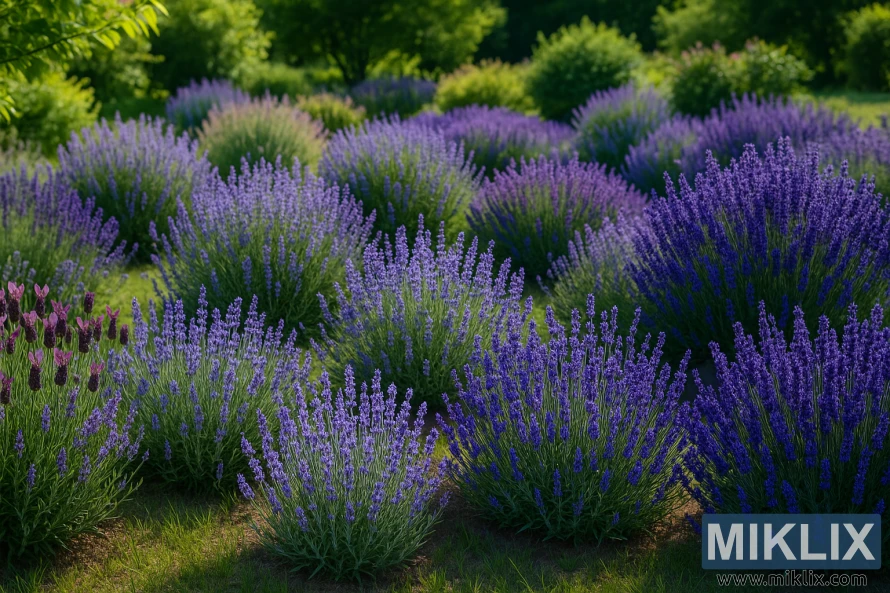
In this guide, we'll explore the most visually stunning lavender varieties, helping you select the perfect plants based on your climate, garden style, and personal preferences. From compact border plants to dramatic statement specimens, these beautiful lavenders will add color, texture, and aroma to your outdoor space while attracting beneficial pollinators throughout the growing season.
English Lavender Varieties (Lavandula angustifolia)
English lavender is the most popular and versatile group, prized for its sweet fragrance and cold hardiness. Despite its name, it's native to the Mediterranean, not England. These varieties typically bloom in early summer and are excellent for culinary use, essential oils, and dried arrangements.
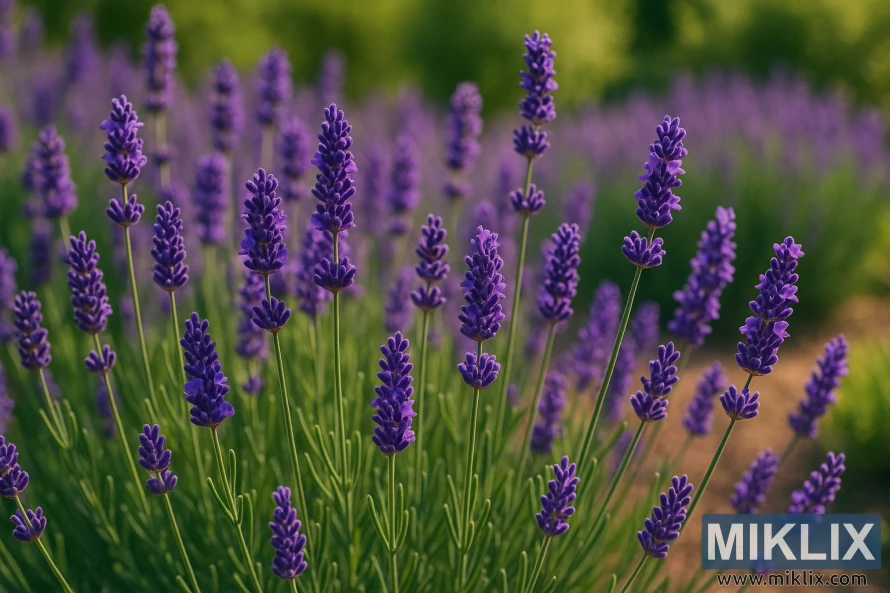
Hidcote
Hidcote is widely considered one of the most beautiful lavender varieties available, featuring intensely deep violet-blue flowers that create a stunning display against its compact, silvery foliage. This variety grows to about 20-24 inches tall and wide, making it perfect for borders, hedges, and container gardens.
- Botanical name: Lavandula angustifolia 'Hidcote'
- Flower color: Deep violet-blue
- Height and spread: 20-24 inches tall and wide
- Blooming season: Early to mid-summer
- Hardiness zones: 5-9
- Special qualities: Intense flower color that holds well when dried
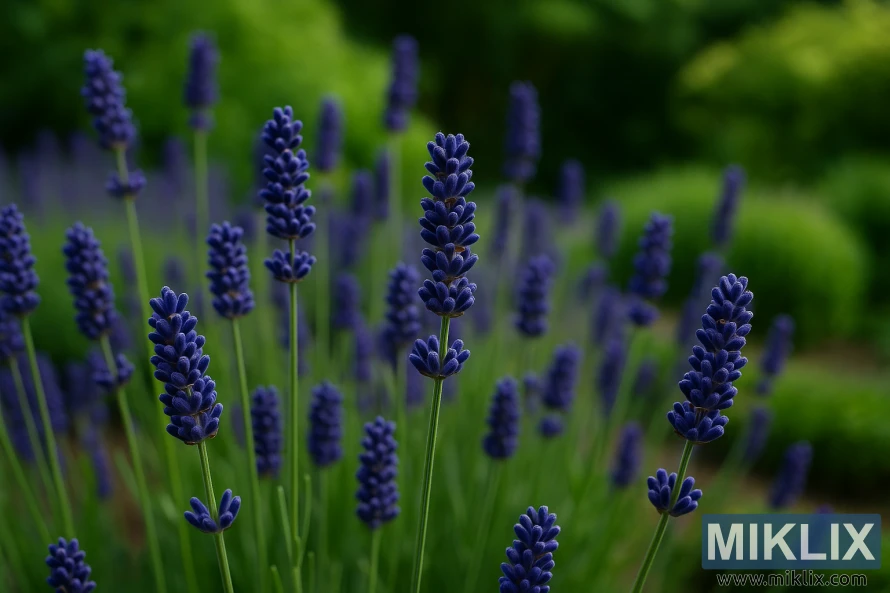
Munstead
Munstead is a classic beauty that blooms earlier than many other lavenders, producing an abundance of lavender-blue flowers on compact plants. This variety reaches about 12-18 inches in height and width, making it ideal for edging garden paths or creating low hedges. Its smaller size also makes it perfect for container gardening.
- Botanical name: Lavandula angustifolia 'Munstead'
- Flower color: Lavender-blue
- Height and spread: 12-18 inches tall and wide
- Blooming season: Late spring to early summer
- Hardiness zones: 5-9
- Special qualities: Early bloomer with excellent cold hardiness
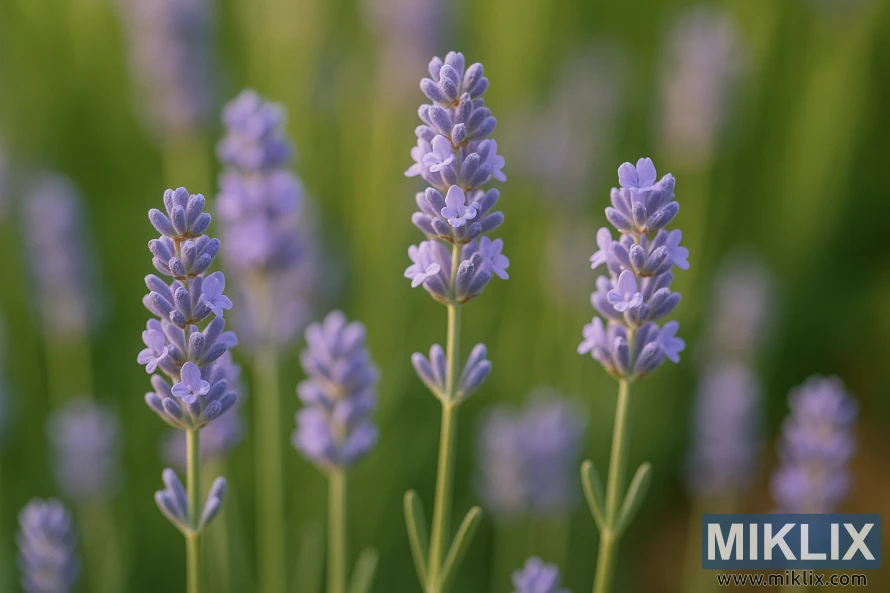
Jean Davis
For those seeking something different, Jean Davis offers a unique color variation with its delicate pale pink to almost white flowers. This soft-hued variety creates a gentle contrast to the more typical purple lavenders and pairs beautifully with roses and other cottage garden plants. Growing to about 18 inches tall, Jean Davis maintains the sweet fragrance that makes English lavender so beloved.
- Botanical name: Lavandula angustifolia 'Jean Davis'
- Flower color: Pale pink to white
- Height and spread: 18 inches tall, 24 inches wide
- Blooming season: Early to mid-summer
- Hardiness zones: 5-9
- Special qualities: Unique pale pink coloration
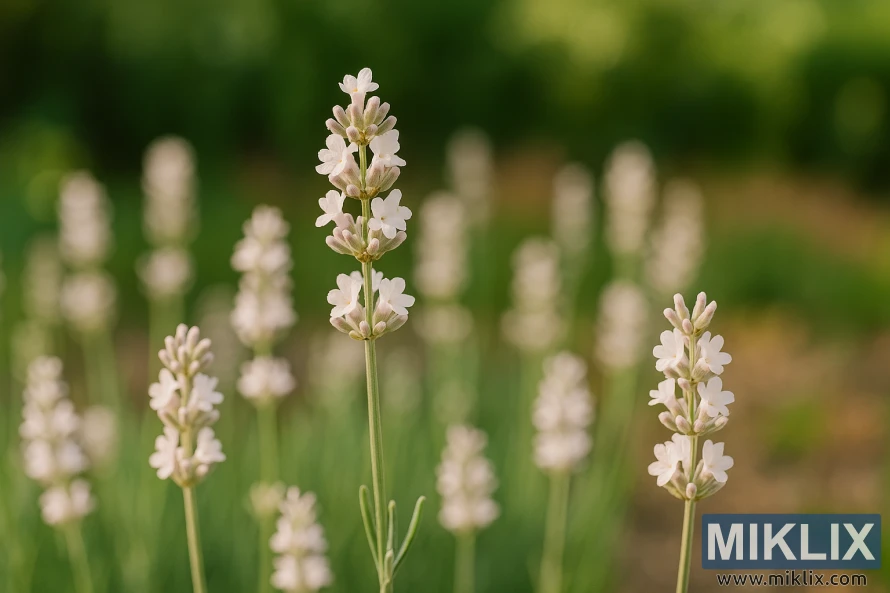
French Lavender Varieties (Lavandula dentata)
French lavender is instantly recognizable by its distinctive toothed leaves (hence "dentata") and showy flowers topped with colorful bracts that resemble rabbit ears. These varieties offer a longer blooming period than English lavenders and thrive in warmer climates. While less cold-hardy, they make excellent container plants that can be moved indoors during winter in colder regions.
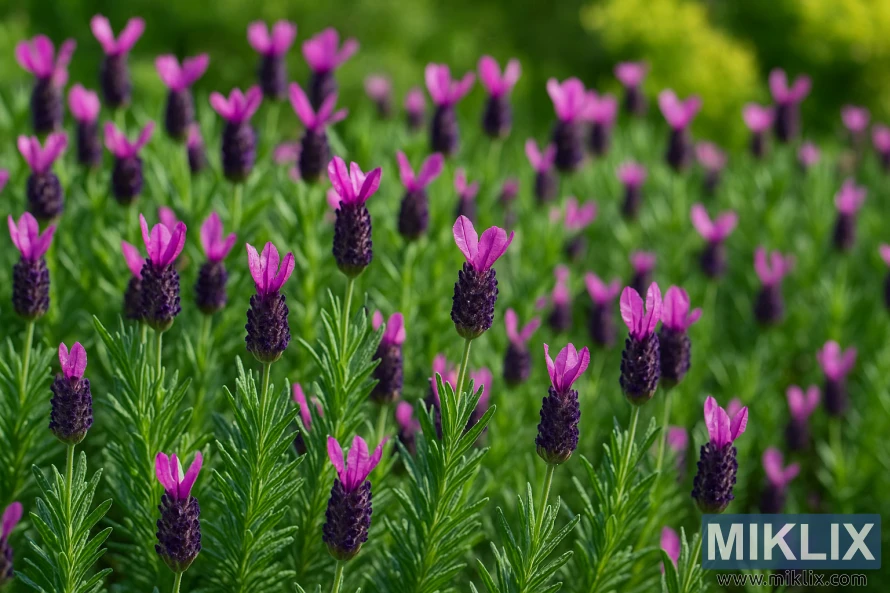
Goodwin Creek Grey
Goodwin Creek Grey is a stunning French lavender hybrid with silvery-grey, toothed foliage that creates a beautiful contrast against its deep purple flower spikes. This variety blooms nearly year-round in mild climates and grows to about 24-30 inches tall and wide. Its exceptional heat tolerance makes it perfect for hot, dry garden locations.
- Botanical name: Lavandula × ginginsii 'Goodwin Creek Grey'
- Flower color: Deep purple
- Height and spread: 24-30 inches tall and wide
- Blooming season: Spring through fall in mild climates
- Hardiness zones: 7-9
- Special qualities: Extended blooming period and striking silver foliage
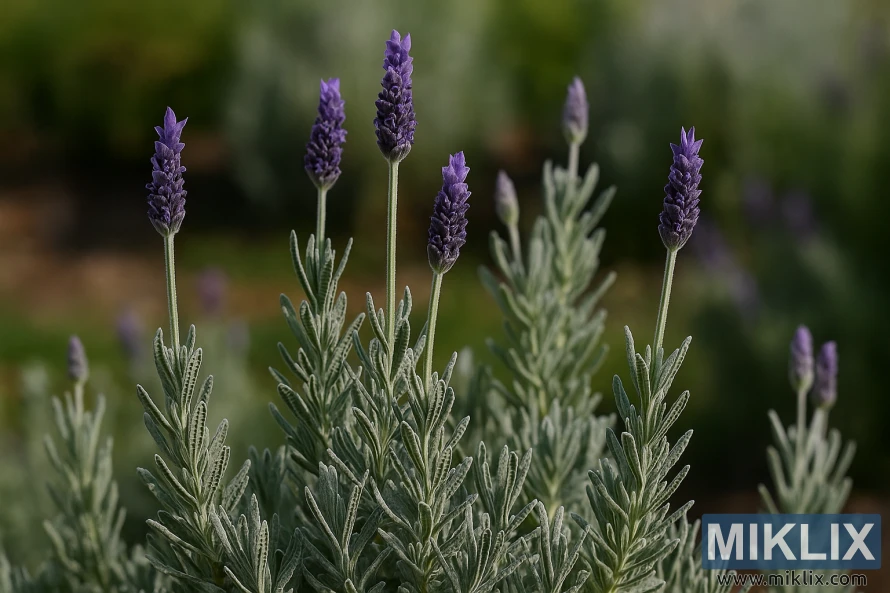
Kew Red
Despite its name, Kew Red produces stunning pinkish-purple flowers topped with pale pink bracts, creating a beautiful bicolor effect. This French lavender variety grows to about 24 inches tall and offers a long flowering season from late spring through fall in mild climates. The aromatic foliage has a more resinous scent than English lavenders.
- Botanical name: Lavandula stoechas 'Kew Red'
- Flower color: Pinkish-purple with pale pink bracts
- Height and spread: 24 inches tall and wide
- Blooming season: Late spring through fall
- Hardiness zones: 8-9
- Special qualities: Bicolor flower effect with distinctive bracts
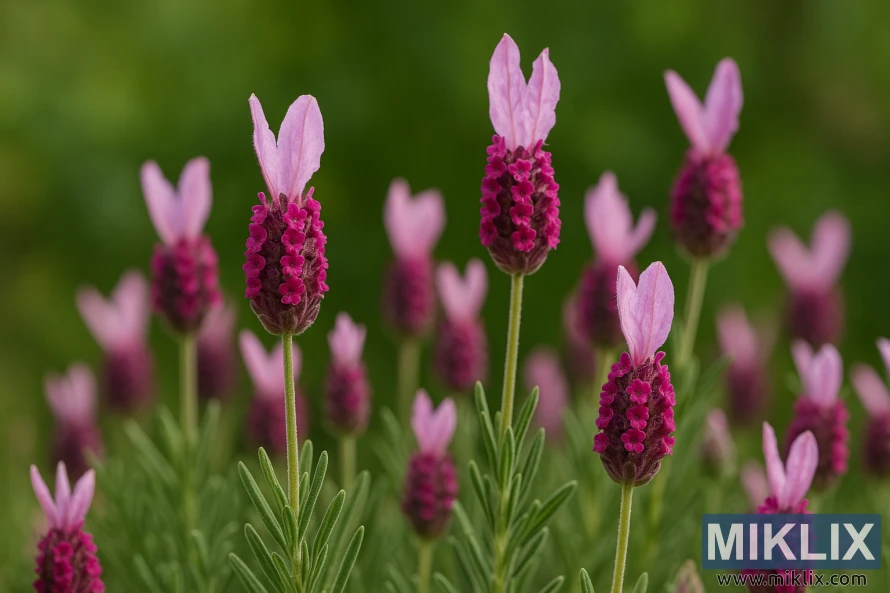
Spanish Lavender Varieties (Lavandula stoechas)
Spanish lavender is immediately recognizable by its distinctive flower heads topped with showy, colorful bracts often called "rabbit ears." These varieties bloom earlier than other lavenders, starting in spring, and offer excellent heat tolerance. While less cold-hardy than English types, they make a dramatic statement in the garden with their unique appearance.
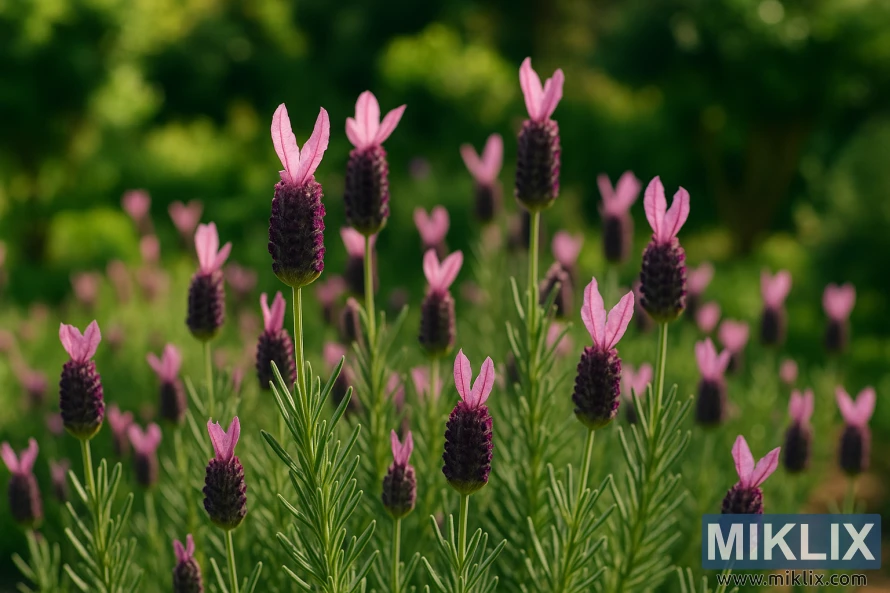
Anouk
Anouk is a compact Spanish lavender that produces an abundance of deep purple flower heads topped with vibrant violet bracts. This early-blooming variety typically flowers from mid-spring and can rebloom throughout the season if deadheaded regularly. Growing to about 24-30 inches tall, Anouk offers exceptional drought tolerance once established.
- Botanical name: Lavandula stoechas 'Anouk'
- Flower color: Deep purple with violet bracts
- Height and spread: 24-30 inches tall, 18-24 inches wide
- Blooming season: Mid-spring through summer
- Hardiness zones: 7-10
- Special qualities: Early bloomer with reblooming capability
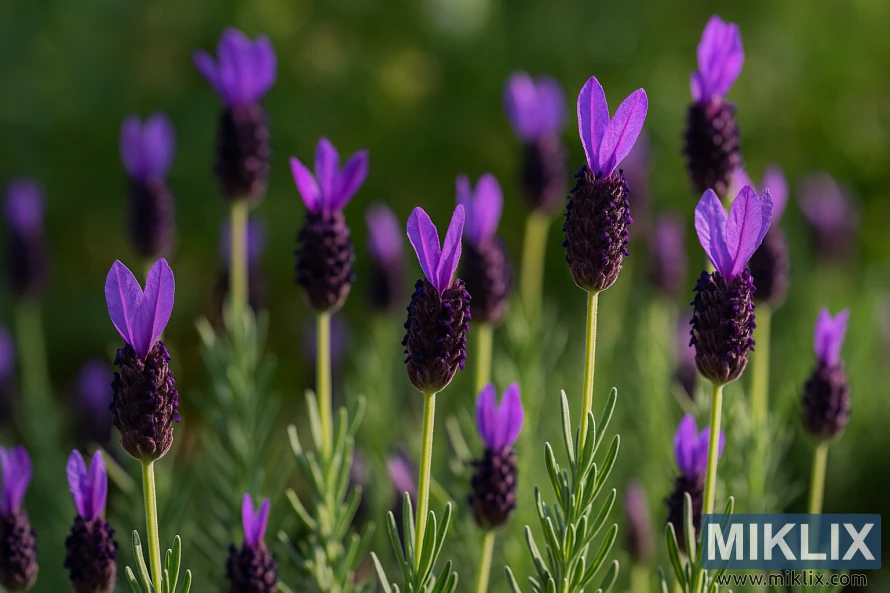
Ballerina
Ballerina offers a unique color transition, with white bracts that gradually fade to pink and purple as they mature. This color-changing quality creates a beautiful display throughout the growing season. This Spanish lavender blooms as early as May and can produce multiple flushes of flowers through early fall in ideal conditions.
- Botanical name: Lavandula stoechas 'Ballerina'
- Flower color: White bracts fading to pink and purple
- Height and spread: 18-24 inches tall and wide
- Blooming season: Late spring through early fall
- Hardiness zones: 8-9
- Special qualities: Color-changing bracts throughout the season
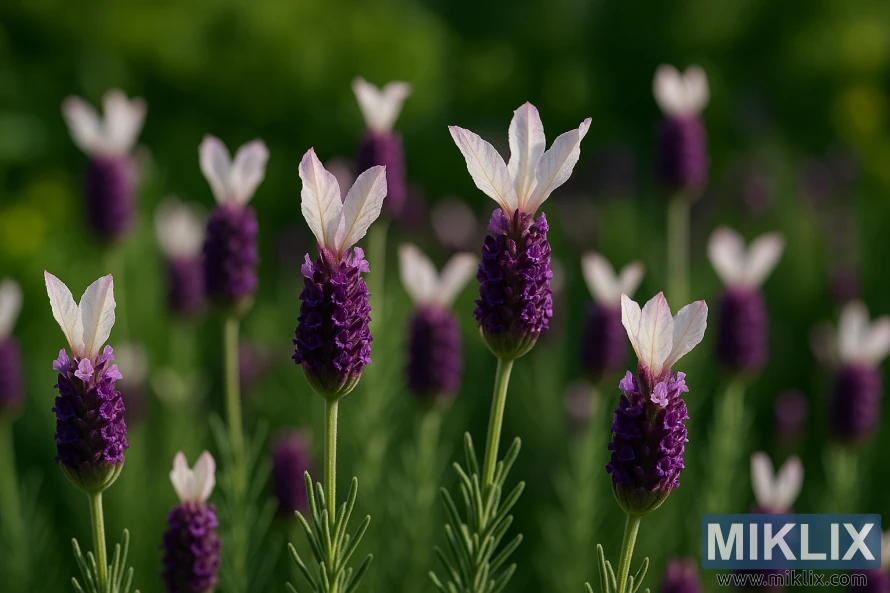
Comparing Beautiful Lavender Varieties
This comparison table highlights the key differences between our featured lavender varieties to help you choose the perfect plants for your garden conditions and design preferences.
| Variety | Type | Flower Color | Height | Hardiness Zones | Bloom Time | Special Features |
| Hidcote | English | Deep violet-blue | 20-24" | 5-9 | Early-mid summer | Intense color, compact |
| Munstead | English | Lavender-blue | 12-18" | 5-9 | Late spring-early summer | Early bloomer, cold hardy |
| Jean Davis | English | Pale pink to white | 18" | 5-9 | Early-mid summer | Unique color, sweet fragrance |
| Goodwin Creek Grey | French hybrid | Deep purple | 24-30" | 7-9 | Spring through fall | Silver foliage, long bloom |
| Kew Red | French | Pinkish-purple | 24" | 8-9 | Late spring through fall | Bicolor effect, long bloom |
| Anouk | Spanish | Deep purple | 24-30" | 7-10 | Mid-spring through summer | Early bloomer, drought tolerant |
| Ballerina | Spanish | White to pink/purple | 18-24" | 8-9 | Late spring through early fall | Color-changing bracts |
Hybrid Lavender Varieties (Lavandula x intermedia)
Hybrid lavenders, also known as lavandins, are crosses between English lavender and spike lavender (Lavandula latifolia). These vigorous plants combine the fragrance of English lavender with the heat tolerance and robust growth of spike lavender. They typically bloom later than English varieties, extending the lavender season in your garden.
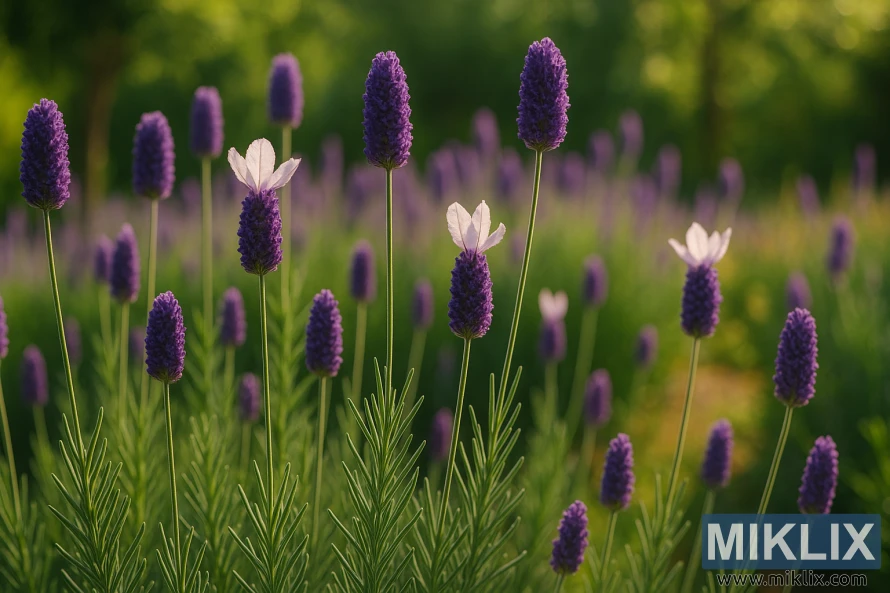
Grosso
Grosso is one of the most impressive hybrid lavenders, producing an abundance of dark purple flower spikes on tall stems. This variety grows to about 30 inches tall and can spread up to 48 inches wide, creating a dramatic presence in the garden. Its high oil content makes it ideal for fragrant dried arrangements and sachets.
- Botanical name: Lavandula x intermedia 'Grosso'
- Flower color: Dark purple
- Height and spread: 30 inches tall, 36-48 inches wide
- Blooming season: Mid to late summer
- Hardiness zones: 5-8
- Special qualities: Large size, high oil content, intense fragrance
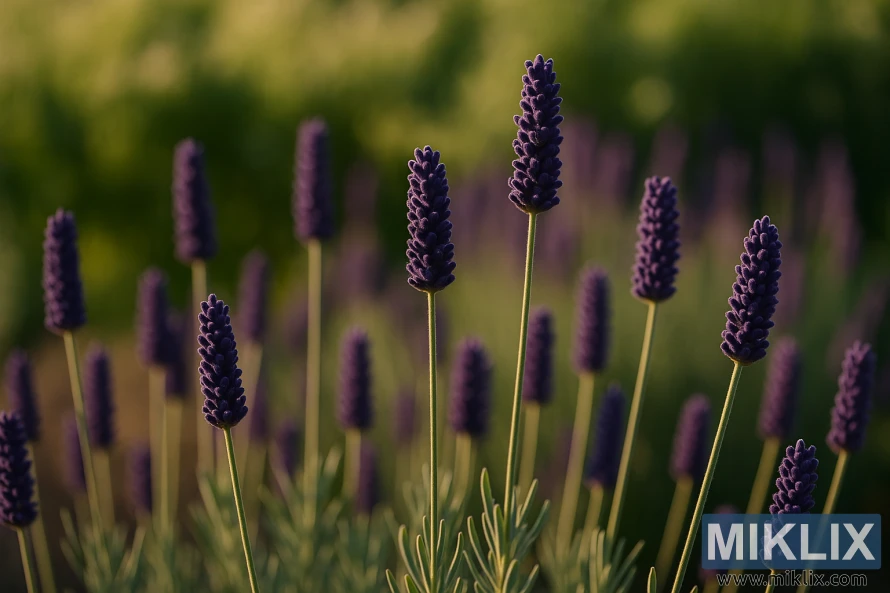
Provence
Provence is a classic hybrid lavender with long stems bearing light purple flowers. This variety grows to about 30 inches tall and wide, creating a beautiful mound of fragrant blooms in mid to late summer. Its clean, sweet scent makes it perfect for culinary use and fragrant sachets.
- Botanical name: Lavandula x intermedia 'Provence'
- Flower color: Light purple
- Height and spread: 30 inches tall and wide
- Blooming season: Mid to late summer
- Hardiness zones: 5-8
- Special qualities: Long stems ideal for cutting, sweet fragrance
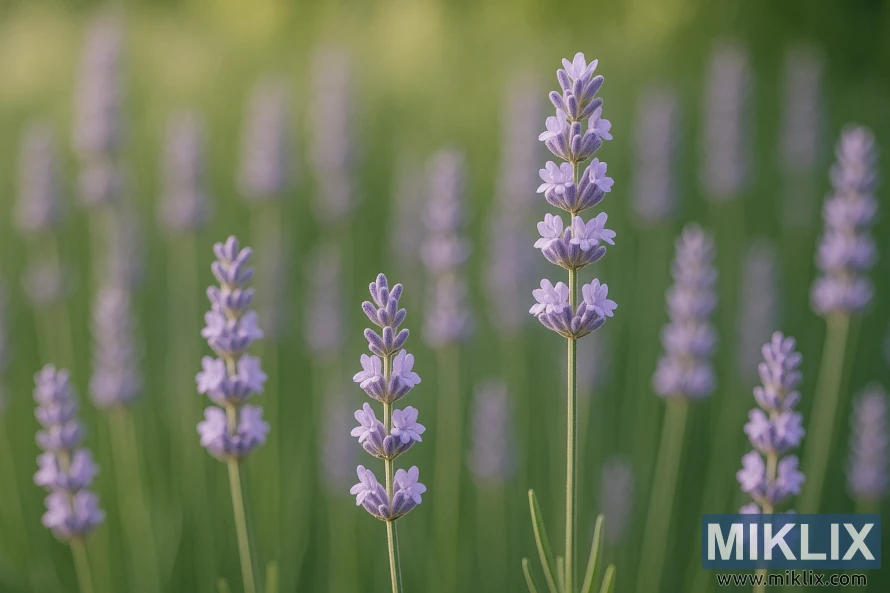
Phenomenal
Phenomenal is a newer hybrid lavender that lives up to its name with exceptional cold hardiness, heat tolerance, and humidity resistance. This versatile variety produces beautiful violet-blue flower spikes on silvery foliage and grows to about 24-32 inches tall and wide. Its adaptability makes it perfect for challenging garden conditions.
- Botanical name: Lavandula x intermedia 'Phenomenal'
- Flower color: Violet-blue
- Height and spread: 24-32 inches tall and wide
- Blooming season: Mid to late summer
- Hardiness zones: 5-9
- Special qualities: Exceptional adaptability to different climates
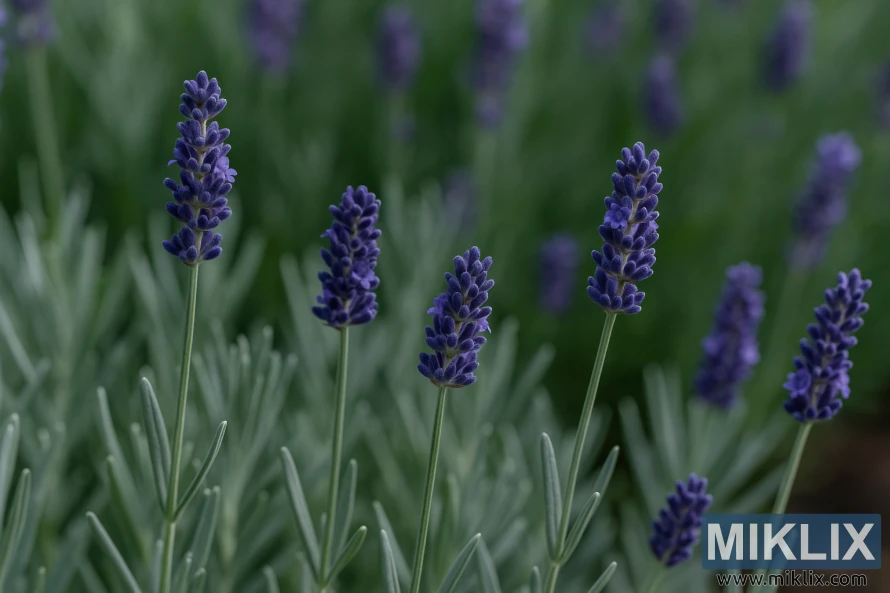
Planting and Care Guidelines for Beautiful Lavender Varieties
To ensure your lavender plants thrive and display their full beauty, follow these essential care guidelines tailored to these Mediterranean natives. Proper spacing and well-drained soil are essential for healthy, beautiful lavender plants.
Soil Requirements
Lavender thrives in poor to moderately fertile, well-drained soil. Heavy clay soils are the enemy of lavender, causing root rot and plant failure. For best results:
- Aim for a soil pH between 6.5 and 8.0 (slightly alkaline)
- Amend heavy soils with coarse sand, gravel, or crushed stone to improve drainage
- Consider raised beds or mounds in areas with poor drainage
- Avoid adding organic matter like compost, which can hold too much moisture
- Add a handful of lime to acidic soils to raise the pH
Sunlight and Spacing
All lavender varieties require full sun to thrive and produce abundant flowers. Proper spacing is also crucial for air circulation and plant health:
- Plant in locations receiving at least 6-8 hours of direct sunlight daily
- Space small varieties (like Munstead) 18 inches apart
- Space medium varieties (like Hidcote) 24 inches apart
- Space large varieties (like Grosso) 36 inches apart
- Allow extra space in humid climates to promote air circulation
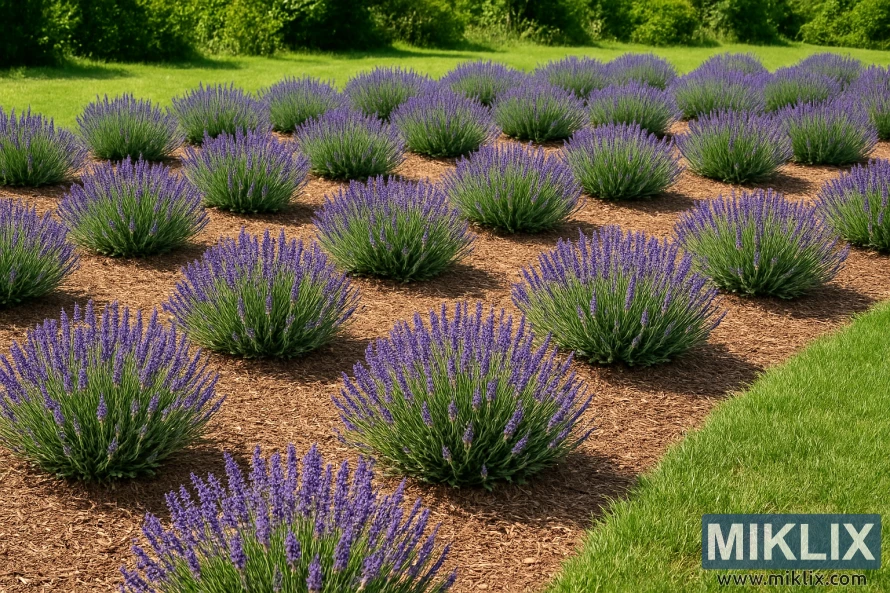
Watering Schedule
Lavender is drought-tolerant once established, but proper watering during the establishment phase is crucial:
- Water deeply but infrequently during the first growing season
- Allow soil to dry out between waterings
- Reduce watering in fall and winter to prevent root rot
- Avoid overhead watering, which can promote fungal diseases
- Water at the base of plants, keeping foliage dry
Pruning Techniques
Proper pruning is essential for maintaining beautiful, long-lived lavender plants:
- Prune English and hybrid lavenders after the first flowering
- Cut back by about one-third of the plant's height
- Never cut into old, woody stems, which won't regrow
- Prune French and Spanish lavenders more lightly, removing spent flowers
- Avoid heavy pruning in fall in cold climates
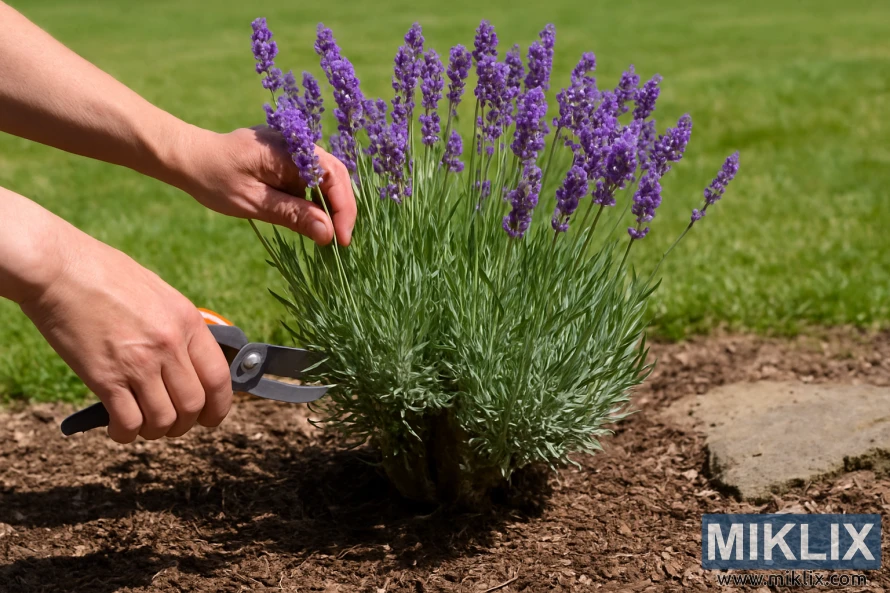
Companion Planting
Enhance your garden design by pairing lavender with compatible plants that share similar growing requirements:
- Roses - classic companions that benefit from lavender's pest-repelling properties
- Echinacea (coneflower) - drought-tolerant perennials with complementary colors
- Sedum - succulent perennials that thrive in the same dry conditions
- Salvia - another Mediterranean herb with similar needs
- Ornamental grasses - create textural contrast with lavender's form
Designing with Beautiful Lavender Varieties
Lavender's versatility makes it a valuable addition to many garden styles. Here are some inspiring ways to incorporate these beautiful varieties into your landscape design.
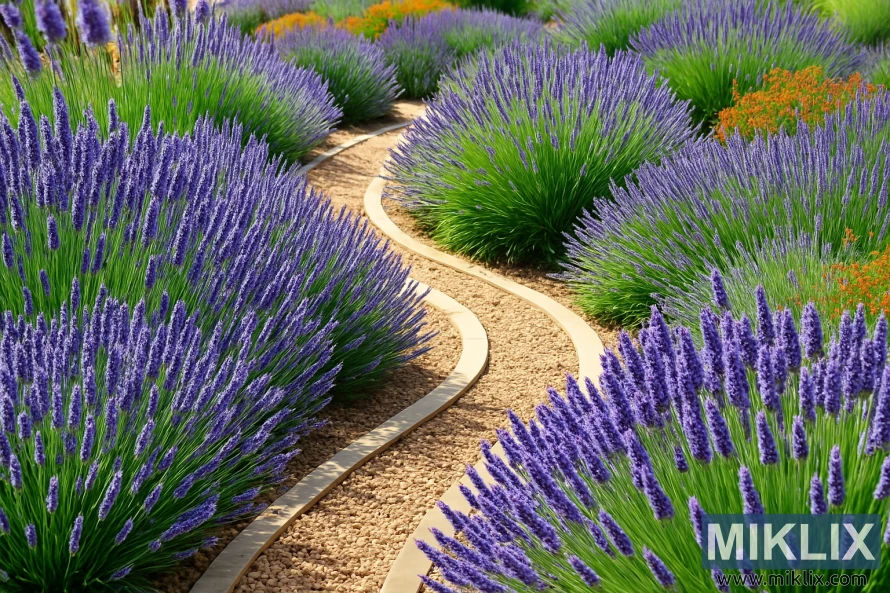
Border Plantings
Lavender makes an excellent border plant, defining garden edges with color and fragrance:
- Use compact varieties like Munstead or Hidcote for formal borders
- Plant in groups of 3-5 for visual impact
- Create a color progression by planting different varieties together
- Edge pathways with lavender to release fragrance when brushed against
- Combine with other Mediterranean herbs like rosemary and thyme
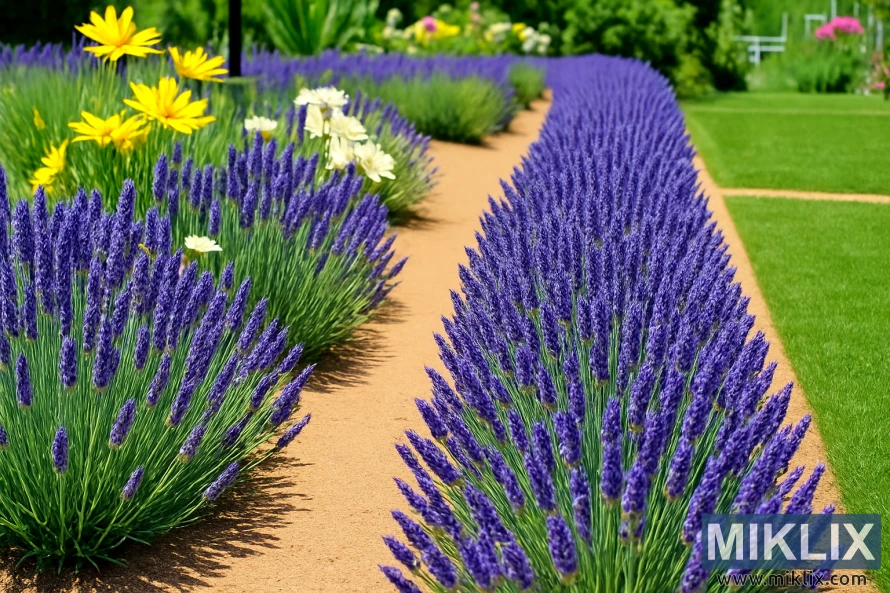
Container Gardening
Lavender thrives in containers, making it accessible even for gardeners with limited space:
- Choose terracotta or clay pots that allow soil to dry out between waterings
- Ensure containers have ample drainage holes
- Use a fast-draining potting mix with added perlite or coarse sand
- Select compact varieties like Munstead or French lavenders for containers
- Move containers to protected areas in winter in cold climates
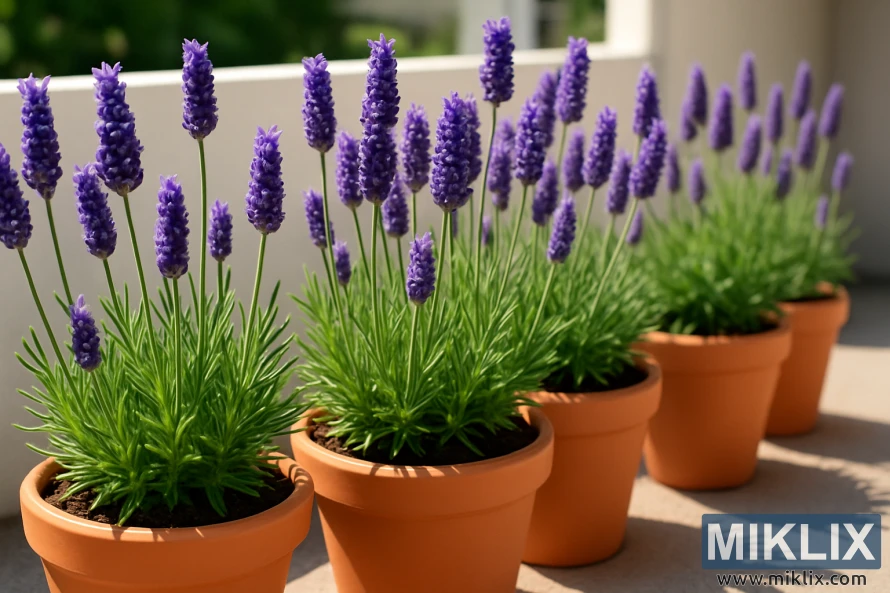
Fragrance Gardens
Create a sensory experience by designing a garden that highlights lavender's intoxicating scent:
- Plant lavender near seating areas where fragrance can be enjoyed
- Combine different varieties for a progression of blooms throughout the season
- Place along walkways where foliage will release scent when brushed
- Pair with other fragrant plants like roses, lilies, and herbs
- Include English varieties like Hidcote and Munstead for the sweetest fragrance
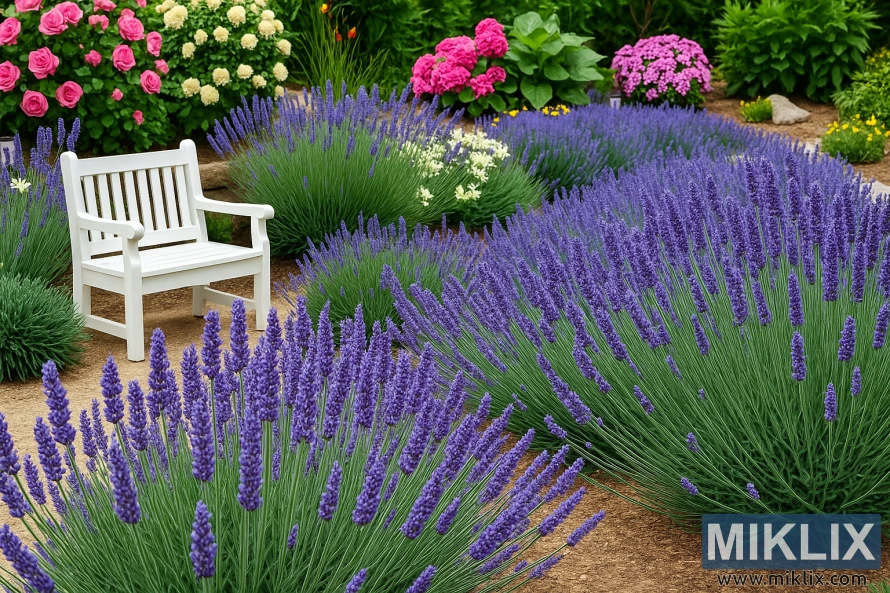
Conclusion
The world of lavender offers an incredible array of beautiful varieties to enhance any garden. From the classic English lavenders with their sweet fragrance and culinary uses to the showy Spanish types with their distinctive "rabbit ears" and the robust hybrid lavandins with their impressive size, there's a perfect lavender for every garden style and climate.
By selecting varieties that match your growing conditions and following proper planting and care guidelines, you can enjoy these Mediterranean beauties for many years. Whether you're creating a formal herb garden, a cottage garden border, or simply adding fragrant plants to your landscape, these beautiful lavender varieties will reward you with stunning blooms, intoxicating scent, and the delightful buzz of visiting pollinators throughout the growing season.
Remember that lavender appreciates benign neglect rather than excessive care. By providing excellent drainage, full sun, and proper pruning, you'll create the conditions for these remarkable plants to thrive and display their full beauty in your garden. Happy planting!
Further Reading
If you enjoyed this post, you may also like these suggestions:
- A Guide to the Most Beautiful Dahlia Varieties to Grow in Your Garden
- Most Beautiful Hydrangea Varieties to Grow in Your Garden
- A Guide to the Most Beautiful Rose Varieties for Gardens
